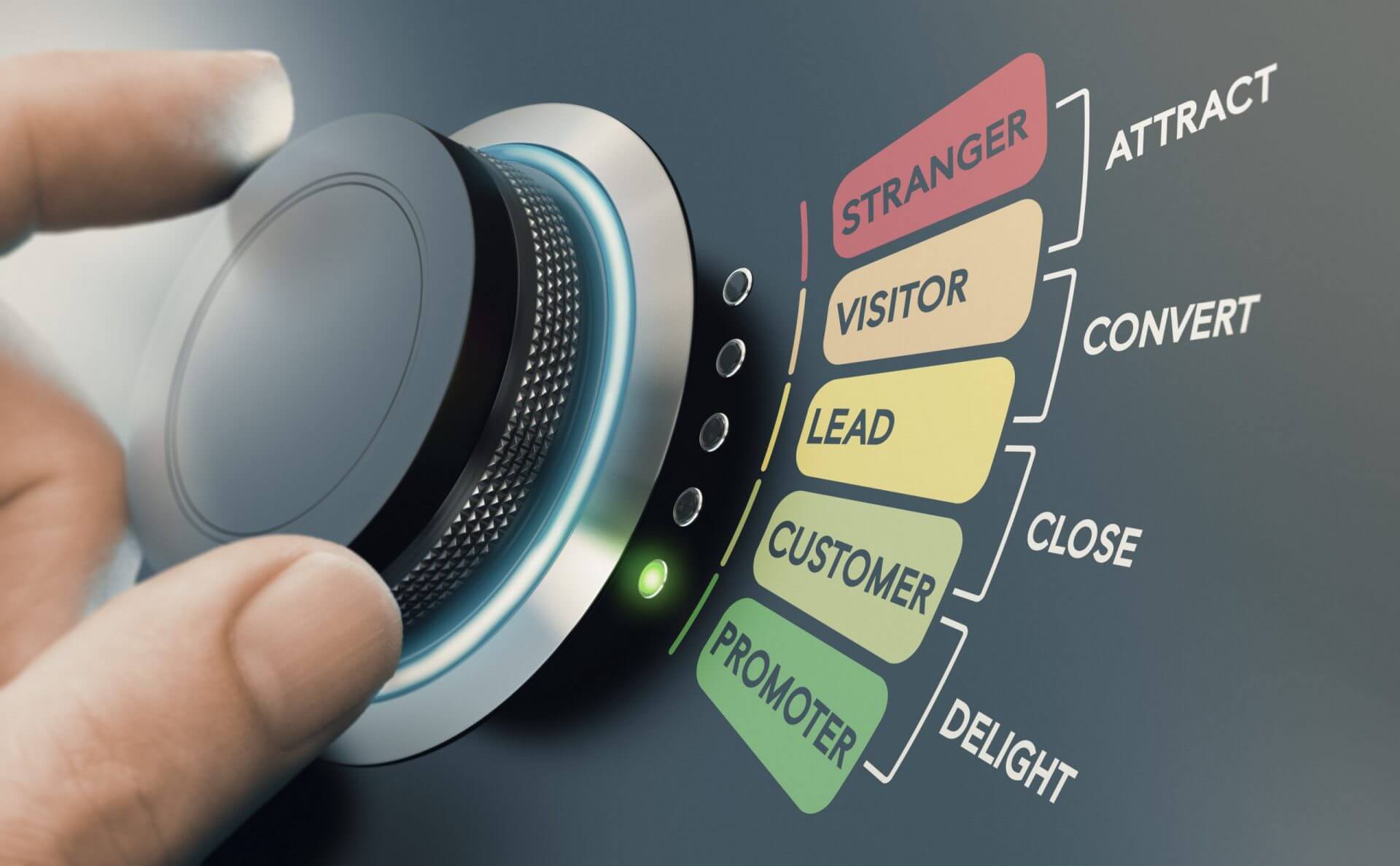Want a heads up when a new story drops? Subscribe here.
Audience temperature is a major indicator of the extent to which consumers are familiar with and engage with your brand. Understanding traffic temperature is the key to crafting a marketing strategy that successfully targets different categories of customers, from those that have never heard of your business to repeat customer audiences.
This approach can be effectively used along with market segmentation which enables businesses to categorize consumers based on demographic, geographic, behavioral, and psychographic characteristics that are most important for them. Here is a brief intro to market segmentation and how targeting consumers by buying temperature can take your Facebook marketing strategy to the next level.
Table of Contents
Marketing Segmentation for Facebook Ads
Segmentation is important in that it allows brands to focus on more profitable categories of consumers, resulting in higher conversions. As most information can be tracked and measured, segmenting customers can help businesses to better allocate resources and choose the right marketing strategies for different target categories. To this end, there are four broad categories to explore – psychographic, demographic, behavioral, and geographic.

Demographic segmentation is the most commonly used variety and accounts for factors such as marital status, occupation, education, gender, and income. These indicators help businesses to find whether someone has both the ability and purchasing power to buy whatever they are trying to sell. For products targeting customers of the age of majority, for example, occupation is not a helpful indicator but age is, and the group of consumers under 21 is by large irrelevant.
Geographic segmentation allows brands to target consumers based on physical location. Indicators include things like population density, weather, city, region, and country. So if you are selling extreme cold weather clothing, for example, targeting customers in South Carolina does not make a lot of sense as it hardly ever snows in winter there.
Then we also have behavioral segmentation based on factors like engagement, special events, usage, and perceived benefits. For instance, there are different reasons to buy organic food: to preserve ecosystem diversity, minimize environmental pollution, avoid antibiotics, hormones, and chemicals, and consume more nutritious products. Finding out what drives purchasing decisions helps brands to fine tune their marketing strategies.
The fourth variety, psychographic market segmentation relies on indicators such as values, beliefs, attitudes, opinions, activities, and lifestyle. This type of profiling can be done with the help of Google Surveys, polls, or attitudinal surveys and allows businesses to target customers based on behavioral patterns and preferences. For example, if a brand is selling backpacks, potential customers are all those who love nature and outdoor activities, travel often, and are into backpacking.
Psychographic segmentation also divides customers on the basis of socioeconomic status or class. Social status can be segregated into 6 broad categories – subsistence, working, skilled working, lower middle, middle, and upper class.
Casual and seasonal laborers and the unemployed are at the bottom of the socioeconomic scale. Next is the working class which comprises unskilled and semi-skilled manual laborers. The members of the skilled working class are all those involved in skilled manual labor. Typical representatives of the lower middle class are all administrative, junior managerial, clerical, and supervisory positions.
The middle class comprises professional, administrative, and intermediate managerial occupations. Members of the upper class include all higher professional, administrative, and managerial occupations. Basically, at the bottom are the unskilled and uneducated while at the top are the highly educated and affluent.

Socioeconomic status is often used alongside lifestyle preferences. For example, some consumers have keen interest in environmental issues such as pollution and climate mitigation while others are pet lovers. Some prefer suburban and rural lifestyle while others – urban living and the cityscape.
Psychographic profiling is based on the idea that both socioeconomic class and lifestyle preferences influence purchasing decisions.
Assess Audience Temperature for Facebook Ads
Now we move to the second ingredient of a successful Facebook marketing strategy – audience temperature, helping businesses to target consumers with different degrees of awareness and knowledge about their brand.
The main categories here are hot, warm, and cold traffic, each offering different opportunities and requiring a distinct approach. Cold traffic refers to users who don’t know you and the product (solution) you can offer. This is a broad group of consumers that are browsing online, maybe they are comparison shopping but are not looking for a specific brand or product.
Warm audiences are all those visitors who know you as they have engaged with you, be it by following you on social media, sharing content, or watching some of your podcasts. They may have subscribed for your newsletter or downloaded a lead magnet. In any case, they know about your products or services and brand.
Hot traffic, our third group is made up of consumers who already used your services or bought a specific product and are more likely to become repeat customers and refer you to others.
Repeat customers are the backbone of any business as they are much easier to market and sell to. They cost less and account for a large chunk of the profits as research by Brain & Company suggests.

In financial services, for example, a mere 5 percent increase in customer retention results in over 25 percent profit gains. Loyal customers are also more likely to purchase other products, with brands benefiting from cross-selling.
The Value of Online Customer Loyalty analysis makes it a point that such consumers are more willing to try other products that companies offer. For instance, 63 percent of Gap’s grocery shoppers said they would purchase over-the-counter drugs and toiletries from their other stores. The same holds for 70 percent of those buying furniture.
Repeat customers are certainly the life and blood of any business but brands that focus on this group only are to miss ample opportunities to engage and sell. There are ways to target cold and warm audiences and convert them into loyal customers that trust you. Here is how.
Tips for Engaging Cold Traffic Facebook Audience
This group is best to approach by introducing your brand to potential buyers. The goal is to make a powerful first impression which is the first step to building a long-term relationship with customers.
Before you start your marketing campaign, the aim being to introduce yourself, it pays to first learn more about your target audience.
Market segmentation can help to this end. Once you’re done researching and profiling, look into different types of content that can help engage with cold audiences. There is plenty of choice depending on your niche and products, including guides, surveys, research findings, and podcasts.
Other options to consider are videos, power posts, blog posts, and lead magnet squeeze pages. All these can help you to turn uninterested consumers into warm traffic. Now that you’ve got them to engage with you, you may want to focus on engagement metrics to find out whether your targeting approach has been successful.
These include free offer requests, event RSPVs, video views, likes and shares on social media, and clicks to your website. This is how you drive and measure warm traffic that knows about you but still hasn’t bought whatever it is that you are selling.
Tips for Engaging Warm Traffic Facebook Audience
These are folks that not only know you but have begun to also like you. They are cheaper to market to and are more likely to respond than uninterested consumers. This is because they have at least a basic level of knowledge about your brand and product.
At this stage, you may want to educate them and offer helpful information in the form of free tools, webinars, product demos, white papers, and e-books. Other options to explore include events, free trial signups, and of course, product offerings.
Now is a good time to convince potential customers that what you offer is a high quality product and value for money. You also need to highlight how you stand out from the competition and what makes you better than others offering similar products or services. It is also important to identify and address customers’ pain points or the problems they’ve encountered to which you can offer a solution. Examples of pain points are the customer’s shopping journey, productivity, convenience, and cost. Your goal here is to offer a wholesome and frictionless experience by alleviating every pain point, including:
- Tracking and delivery
- Product availability
- High pricing
- Website navigation
- Multi-channel shopping
- Complicated fees
- Customer service channels
There are different ways to go about addressing pain points such as reading online reviews, surveying consumers, and asking your sales department to share their opinions and observations. Taking a close look at your competitors also helps, including details such as their marketing copy, features pages, and website. With all pain points alleviated and consumers trusting you, potential customers have already transitioned to the hot traffic category which is much easier to convert.
Tips for Engaging Hot Traffic Facebook Audience
Hot audiences are made of people that already know you and trust you or have bought some of your products. They are confident that the solution you’re offering can solve their problem best.
This is the group with the greatest potential for conversion, and all you need to put them in a buying mood is a solid sales pitch. The types of content that work well at this stage include service offer, product pages, and landing and sales pages. You may also use retargeting as a way of reminding consumers of your products or services.
Retargeting offers a number of benefits such as improved cost-effectiveness, insights about your target audience, better brand recognition, and ultimately more sales. You can choose from a number of different strategies to achieve the above goals, including email, cross-channel, account-based, and buyer persona retargeting as well as contextual, site, and search targeting. If you want to focus on buyer personas, for example, market segmentation can help you to understand who, where, and why is likely to purchase a certain product. You will also get important insights such as:
- Inactivity
- Exit intent
- Referral source
- Campaign history
- Cart value
- Page types visited
- Time spent on site
- Number of pages visited
- Number of sessions
Other types of segmentation that you can use to retarget hot audiences include technographic, life stage or generational, firmographic, and transactional. If you are in the high tech sector, for example, technographic segmentation can help you to understand which applications, tools, and hardware customers are most commonly using. If you are a B2B company, on the other hand, you will benefit from firmographic segmentation and details such as sales cycles stage, performance, number of employees, location, and industry.
Alternative Facebook Targeting Approaches: the Marketing and Sales Funnel

Another useful tool to categorize people based on familiarity with your product, the marketing and sales funnel has three levels – bottom, middle, and top. Top-of-the-funnel or TOFU is made up of consumers that are searching for general information and not a specific product or service. This is basically cold traffic, and the types of content to use to engage with customers include checklists, infographics, videos, and e-books. Other channels that can help you to get the most out of your marketing efforts include events, trade shows, referrals, and social media engagement.
Middle-of-the-funnel or MOFU is the stage at which people know about your brand and product but haven’t bought anything yet. What you can do to make them switch to buying mode is offer webinars, case studies, white papers, and blog posts. Social media engagement also helps.
Bottom-of-the-funnel or BOFU is where you have customers that are at the decision making stage. This is not hot traffic yet /or at least not everyone/, and you must use retargeting to remind consumers of your brand and send them to your landing page. Other ways to engage with potential customers include email marketing, giveaways and contests, special offers, and surveys. To get visitors to join your pipeline, you can also use LinkedIn InMail and Sponsored Post, Facebook Lead Gen Form, and paid search.
Basically, the marketing and sales funnel is your customers’ journey from browsing and research to making a decision to buy a product. It is a strategy that helps optimize your marketing efforts and the customers’ experiences.
Alternative Facebook Targeting Approaches: Focus on Buyer Personas

Full length profile shot of people with groceries waiting in line isolated on white background
Identifying different buyer personas can help you to engage with your audience in more meaningful and productive ways. The main types to focus on are the skeptical, relationship-oriented, collaborative, decisive, and analytical. The decisive type is results driven, proactive, and confident while making decisions, often ignores the details, and tends to dislike routine and repetitive tasks.
If you are selling to them, it pays to show willingness to take some risk and convince them that your style is as decisive as theirs. In contrast, the collaborative persona is adaptable, diplomatic, tactful, and deliberative. Customers like this usually listen to understand, value interpersonal relationships, and are appreciative, curious, self-motivated, and team focused. When targeting the collaborative type, it is important to help them understand how your product benefits them and to address all of their pain points and questions.
We also have the relationship-oriented persona or the social personality type which uses ideas, words, and feelings to relate to others. The key traits that underlie this type are agreeableness, openness, enthusiasm, and creative problem solving. They are also enterprising, social, artistic, investigative, and realistic. When this personality type is in /or is/ your target group, make sure you listen to what they have to say and share their enthusiasm.
A fourth buyer persona is the skeptical customer who is cautious about embracing new concepts and ideas and rarely takes things at face value. When targeting them, keep in mind that they may not feel comfortable talking over the phone; so, you can send them an email instead. We also have the analytical buyer who is thoughtful, self-disciplined, organized, and focused on results. They like to get all the facts and figures before making a decision. So if your target group is made of a bunch of analytical buyers, you need to provide them with statistics, testimonials, and case studies to highlight the quality and accuracy of your service or product.
Wrapping It Up
There are different strategies to approach and engage with customers, from market segmentation and warming cold traffic to using the marketing and sales funnel and targeting consumers based on buyer personas.
With audience temperature, the goal is to target different types of traffic – hot, warm, and cold using the right tools, which can be surveys, podcasts, or blog posts. Market segmentation allows you to divide each type of traffic into smaller groups that share similar characteristics, including location, needs and interests, and demographics.
An alternative approach, the marketing and sales funnel illustrates the process of turning potential customers into existing ones and provides brands with the right tools for each stage. Finally, focusing on buyer personas can help businesses to approach consumers in a more personal way based on personality type and peoples’ unique traits and behavioral tendencies.
Sources: https://www.thebalancesmb.com/target-marketing-2948355
https://media.bain.com/Images/BB_Prescription_cutting_costs.pdf
https://media.bain.com/Images/Value_online_customer_loyalty_you_capture.pdf
https://www.yieldify.com/blog/types-of-market-segmentation/
https://www.singlegrain.com/marketing-funnels/how-targeting-cold-warm-hot-traffic-build-successful-customer-relationships/




